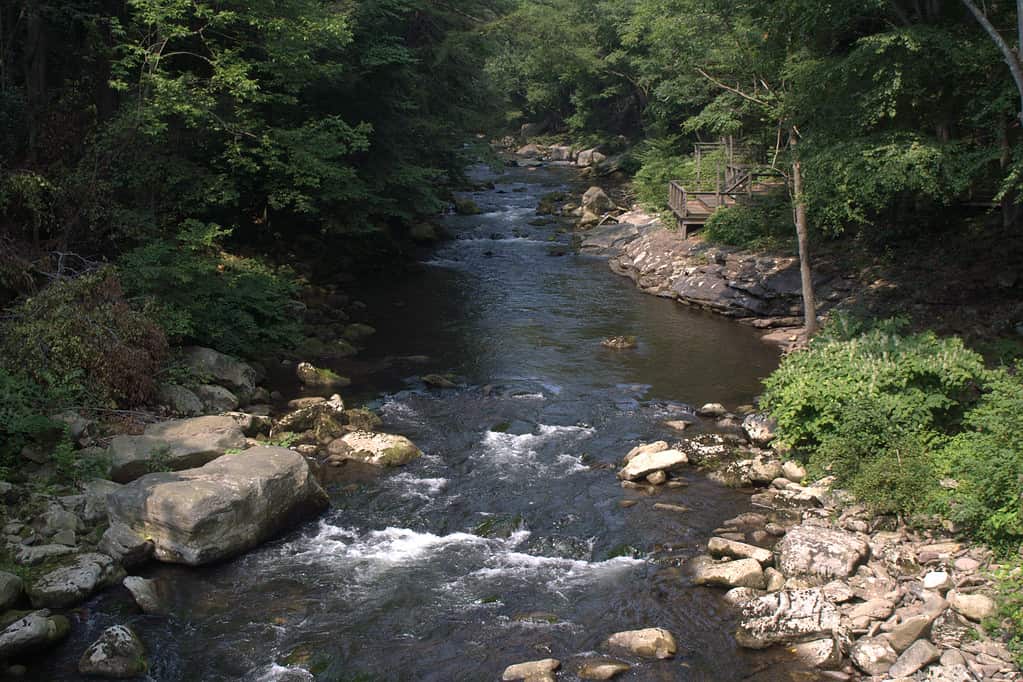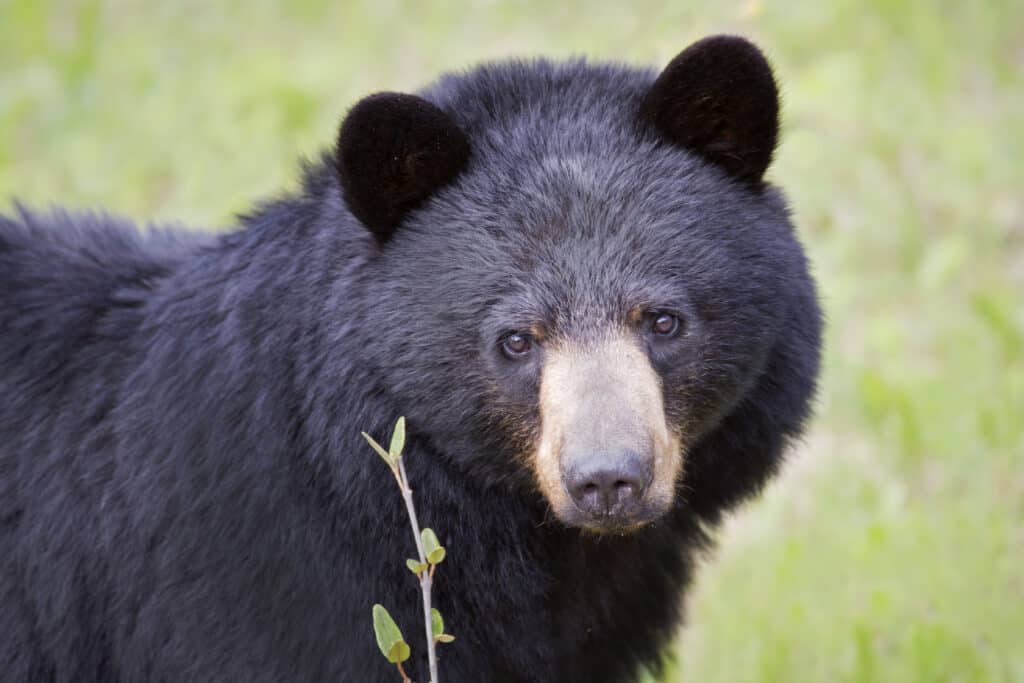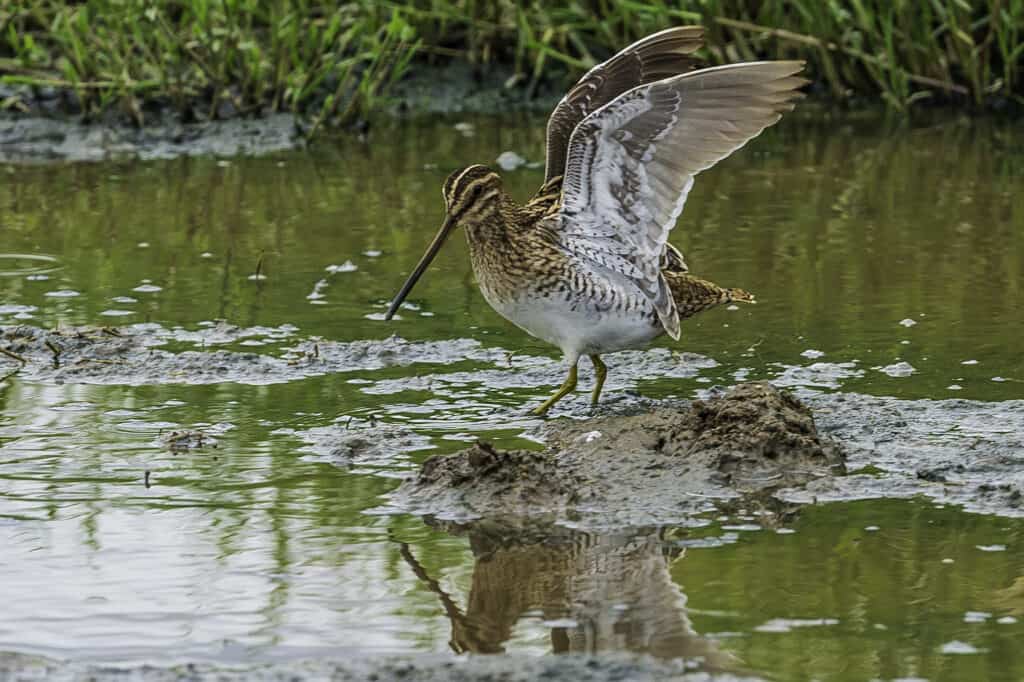Maryland is the ninth, smallest state in the entire U.S., including the contiguous states of Alaska and Hawaii. That said, the largest forest in Maryland isn’t very large, at least in terms of forests spread across the North American continent.
Despite the relative smallness of the state, the largest forest in Maryland (Savage River State Forest) still covers 54,000 acres of real estate. To a single human being, standing in the middle of such vastness, 54,000 acres probably seems infinite.
To be fair, it is pretty large. The hiking opportunities are immense, as well as camping and a ton of other recreational activities. In addition, over a hundred species of birds call the Savage River State Forest home, nestling within the thousands of hardwood trees that blanket the landscape.
Recreation in the Savage River State Forest
Of course, it’s one thing to talk about the immensity of this state forest and quite another to visit it. Nevertheless, its sheer size opens up a wealth of opportunities for those who love nature and the great outdoors in general.
Camping
There are six major camping areas within Savage River State Forest, all of which are for primitive camping. There is simply no better way to enjoy the beauty of nature and the outside world than primitive camping. It’s just not the same as rolling up in a Class A motorhome.
Within the Savage River State Forest are two state parks: New Germany and Big Run. Visitors have a choice of primitive camping or renting a cabin. Either way, you choose to go, the parks make one thing clear — you are temporarily inhabiting the home of an exceptional amount of wildlife.
Excessive warnings over taking care of your food and refraining from trashing the place abound throughout both parks. The Savage River State Forest is a stunningly beautiful slice of nature, and both parks ensure that visitors are well aware of that fact.
Hiking Trails
Savage River Forest has ten hiking trails. The hiking trails run from anywhere between moderate to difficult, and all of them are several miles long. The hiking trails that wind through the nearly 55,000 acres of woodland provide visitors with exceptional views of the Savage River Forest.
The vast majority of the forest is hardwood, including oak trees, hickory trees, white oak, chestnut oak, and white ash. The trails are easy to follow, but they are very much a part of the local environment as well. Hiking a trail in the Savage River State Forest is almost the same as free hiking.
Water and Boating
Between the two parks, there are two boat launch points: Dry Run Boat Launch and the Reservoir Dam boat launch. While fishing is pretty popular on the Savage River Reservoir, there are plenty of kayakers and canoers on the water.
It’s an excellent way to see everything that Savage River State Forest has to offer. Grouse, ducks, and blue herons frequent the water, depending on the time of year.

Savage River in Savage River State Forest, Maryland, as seen from the Allegany Bridge.
©Aneta Kaluzna, CC BY-SA 3.0 <https://creativecommons.org/licenses/by-sa/3.0>, via Wikimedia Commons – License
Types of Animals in the Largest Forest in Maryland
As mentioned above, there are roughly a hundred different species of bird in the Savage River State Forest. With 54,000 acres of real estate, there are bound to be a ton of animals within the area, of all kinds.
Mammals
White-tail deer are very populous in Savage River. While it’s difficult to judge the exact population of whitetail deer at any given time, we can get an idea based on the annual harvest via deer hunting season. In 2010, the harvest in Garret County (where Savage River State Forest is located) reports that the Garret County harvest was the highest of any county.
Black bears are also common in Savage River State Forest, as well as most of the continental United States. They’re so common in Savage River that bear hunting seasons are now a thing. The common consensus is that there are up to 500 adult black bears within the National Forest.
Garret County has some of the highest harvest counts on whitetail deer on an annual basis. The same is true of wild turkeys. Raccoons, eastern gray squirrels, and bobcats are very common in Maryland, especially within the state forest.

There are up to 500 adult black bears within the Savage River State Forest.
©Wild Art/Shutterstock.com
Birds
There are far too many birds in Savage River to list in a single article, but there are some worthy highlights. Migratory birds and waterfowl frequent the Savage River State Forest, especially around the reservoir area.
Savage River National Forest contains multiple habitats for teals, black ducks, mallards, and wood ducks. Woodcock are also prevalent, despite their declining numbers over the last few decades. The National Forest proves to be a very fertile breeding ground for them.
Locals hope that the opportunities Savage River provides will help boost the woodcock population throughout the area. Woodcock also winter at the largest forest in Maryland. The winter months are a good time to spot Woodcock.
Birds of prey, such as bald eagles and golden eagles, take advantage of the forest’s high population of opossums, canids, and various small rodents. Great blue herons and kingfishers frequent the shallow shorelines of the reservoir, hunting small baitfish.

Woodcock are also present in the Savage River State Forest, despite their declining numbers over the last few decades.
©iStock.com/Gerald Corsi
Marine Life
Brook trout are native to the state of Maryland and, although their numbers are dwindling to the point of endangerment, they maintain a very healthy population in the Savage River Reservoir. Rock bass, smallmouth bass, rainbow trout, bluegill, fathead minnows, and brown trout are prevalent in the reservoir.
Outside of brook trout, all of the other species of fish found in the reservoir are non-native to the state of Maryland. Fishing is a big deal on the reservoir, and it’s very common to see anglers out on the water, either flyfishing or moving about the water, eyes on their fish finders.

Brook trout are native to the state of Maryland and maintain a very healthy population in the Savage River Reservoir.
©Dec Hogan/Shutterstock.com
Where is Savage River State Forest Located on a Map?
To find Savage River State Forest on a map, you will need to focus your search on Garrett County in Maryland. Specifically, the forest sits roughly 18 miles southwest of Grantsville, MD – which itself is situated along Interstate 68.
Once you have located this general area on your map or GPS, you can then look for signs or markers that indicate access points into Savage River State Forest. These may include trailheads for hiking or mountain biking trails within the forest itself, as well as nearby parking areas where visitors can leave their cars and begin exploring on foot.
Overall, if you are looking for an outdoor adventure in one of Maryland’s most stunning natural areas – then Savage River State Forest should be at the top of your list!
Final Thoughts
The largest forest in Maryland is thriving with animals, birds, and fish. It’s an amazing place to visit, whether you’re camping in a tent for the weekend or you get your hands on a cabin rental. The two parks that make up the national forest do a good job in terms of park management.
As huge as the forest is, it would take years of periodic visits to explore every nook and cranny that it has to offer. Fortunately, the sights and sounds alone are more than enough to bring in repeat visitors who appreciate nature and love to explore the great outdoors.
The photo featured at the top of this post is © SevenMaps/Shutterstock.com
Thank you for reading! Have some feedback for us? Contact the AZ Animals editorial team.






